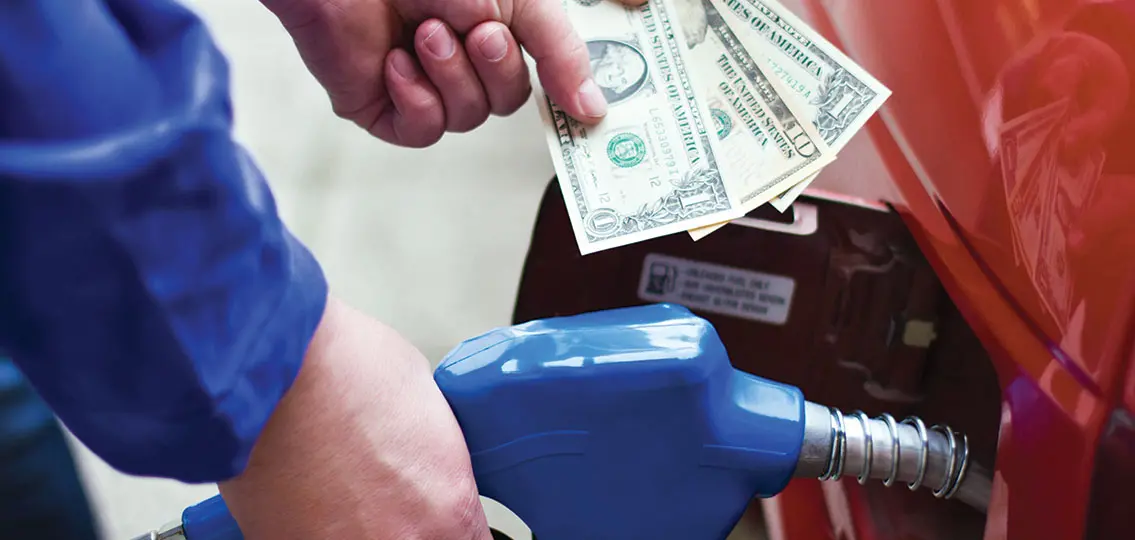Bethany and Scott Palmer started talking to their kids about car costs early—unusually early, in fact. Their son, now age 17, started saving for a car a decade ago, when he was seven. “It taught him about savings, thinking about the future,” says Bethany, who with her husband is co-founder of The Money Couple and co-author of The 5 Money Conversations to Have With Your Kids at Every Age and Stage.

As their son approached driving age, the Palmers agreed to match up to $6,000 on the purchase of a vehicle to ensure that their son was able to afford a safe car versus a clunker. They also agreed to pay for car maintenance and let him know that if he got a ticket within the first year, they would take away his car for a month and have him reimburse them for the ticket. When he got a ticket, they followed through on that promise.
Getting a driver’s license can be an exciting rite of passage, but the costs of gas, insurance, and maintenance, not to mention the vehicle itself, aren’t cheap.
3 Ways to Include Teens in the Financial Responsibility of Driving:
1. Set expectations around who’s paying for what.
Ellie Kay, a mother of seven and the founder of Heroes at Home, a financial education nonprofit, recommends considering the teenager’s ability to contribute. “If the teen has a part-time job or an allowance that will allow them to pay for their gas and a portion of their auto insurance costs, then that would be factored into the division of costs,” she says. “Some families can afford to pay all these costs, but if the teen doesn’t have some financial investment in the driving experience, then they may lack motivation to keep costs down.”
Having a teen contribute to a vehicle purchase or other driving costs can also provide a valuable learning opportunity. “It’s our job as parents to teach them and not assume that they understand being responsible,” says Bethany Palmer. Before you hand over the keys, outline who pays for gas, maintenance, and insurance, and what happens if the teen doesn’t follow safe driving practices. These discussions lay the groundwork for when the teen grows up and is responsible for managing all car costs and responsibilities on their own.
2. Be clear that having a license comes with family responsibilities.
Beyond discussing who pays for what, also communicate any family responsibilities tied to driving, says Kay. In their family, she says, “part of driving our vehicle means you take your brother to school with you and we coordinate who gets the vehicle, with the older child getting first dibs.”
| [adrotate banner=”100″] |
A car-sharing arrangement can help siblings learn to plan ahead and work as part of a team. Pitching in with driving responsibilities and errands could also be part of the cost-sharing arrangements because it frees up parents to work more instead of chauffeuring younger kids to after-school activities or running to the dry cleaner. (First, consult your state laws, as some may limit how many people a new driver can shuttle around.)
3. Incentivize safe driving.
It’s generally cheaper to insure a teen driver as part of a multi-vehicle family policy rather than having the teen buy their own insurance policy. Check with your insurer to see if they offer discounts for good grades, completing driver’s education, or allowing the insurer to monitor the teen’s driving using a vehicle tracker.
Part of your teen’s contribution to car costs could be maintaining good grades and a clean driving record. If their grades slip or they get a moving violation, they may need to make up the difference or buy their own insurance policy. Set expectations ahead of time about what will happen if the teen slips up, Bethany Palmer says.

Consider having your teen research what it would cost to pay for their own car insurance if they get a moving violation. “It takes 10 minutes,” says Kay. “It’s not difficult for them to do the research.” Once they know the financial cost, they may be less inclined to text and drive or engage in other risky behaviors behind the wheel.





